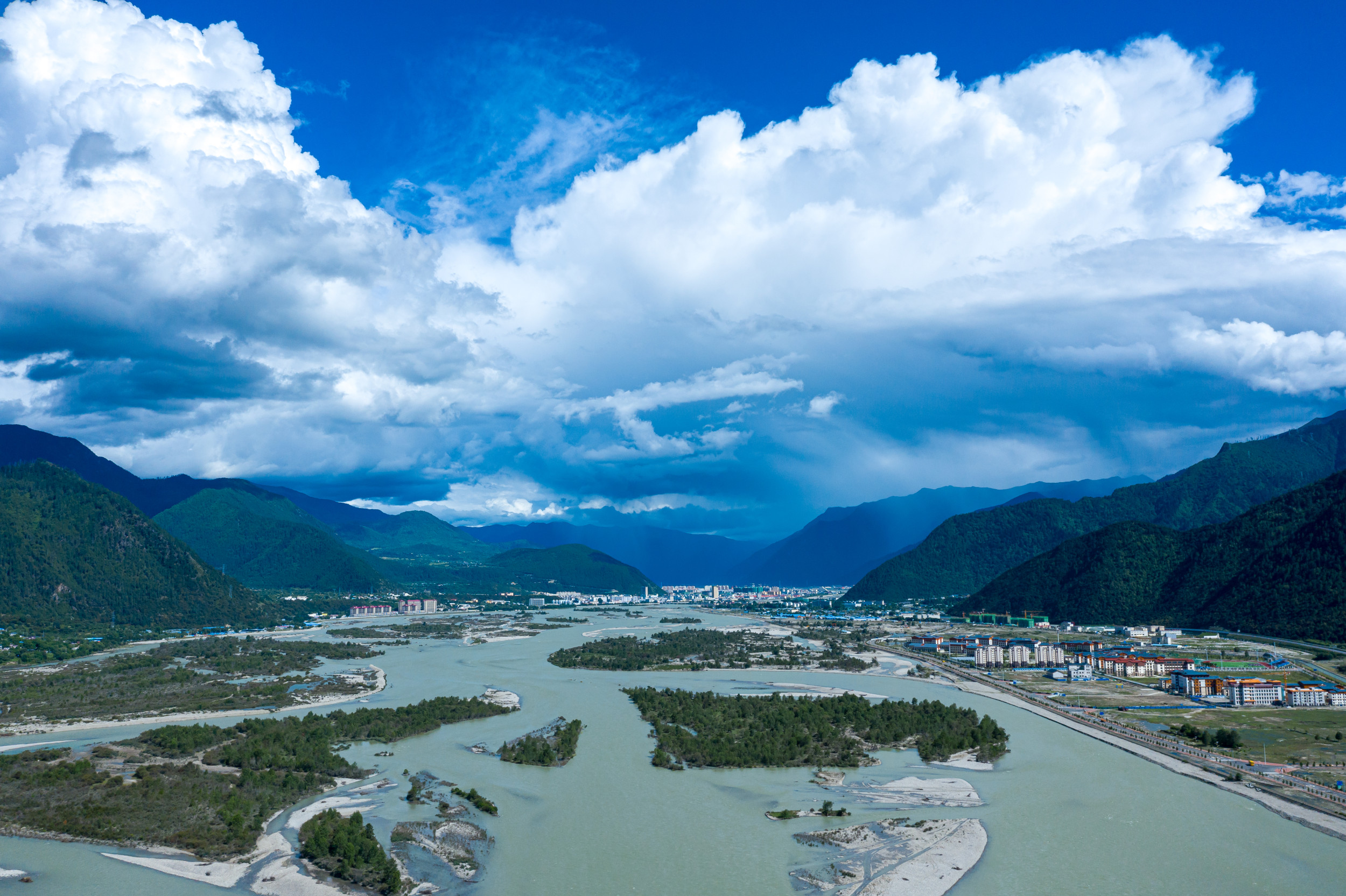
Construction has officially commenced on what is set to become the world’s largest hydropower dam, China’s premier Li Qiang announced on July 19.
Located on the eastern rim of the Tibetan Plateau, the multi-dam cascade is expected to generate 300 billion kilowatt-hours of electricity annually—equivalent to the total electricity consumption of the United Kingdom last year, according to Reuters.
Described by Li as a “project of the century,” the megastructure will be built along the lower reaches of the Yarlung Zangbo River, which drops more than 6,500 feet in just 31 miles, presenting vast hydroelectric potential. The project is expected to cost approximately $167.8 billion and will include five cascading power stations, according to China’s state news agency Xinhua.
“This dam can almost power the state of Texas,” Mat Merten, the owner and principal engineer of the functional safety consultancy group SIL Safe, told Newsweek. “It is a remarkable project and will bring decades of reliable power to the region.” Merten added that the scale of the dam’s energy production is “simply astounding.”
Getty
The project will surpass the capacity of the current largest dam in the world—the Three Gorges Dam on the Yangtze River, which has held the top spot since 2012 with a generating capacity of 22,500 megawatts (MW), according to the United States Geological Survey (USGS). In contrast, the Grand Coulee Dam in Washington, the largest in the United States, has a capacity of about 6,800 MW, placing it fifth globally.
The dam is projected to begin operations sometime in the 2030s, and Beijing says it will meet growing electricity needs both in Tibet and across China. Authorities claim it will not significantly affect downstream water supplies or the environment, according to Reuters.
Chinese officials maintain the new Tibetan Plateau dam will prioritize ecological preservation and special emphasis “must be placed on ecological conservation to prevent environmental damage,” Li said, according to Xinhua via Reuters.
For Chinese policymakers, the dam also represents a strategic piece in the country’s broader energy and climate agenda, according to Erin Sikorsky, director of the Center for Climate & Security. “Beijing is keen to diversify energy away from fossil fuels and sees hydropower as a key tool in its toolbox,” Sikorsky told Newsweek. “It also views such projects as having economic benefits.”
Aidan Charron, associate director of EARTHDAY.ORG, echoed this view, calling the initiative part of a broader dual-energy strategy. “China’s vast and intricate river system provides a strong and obvious natural base for growing their hydropower capabilities,” Charron said, noting the expansion of solar and wind projects underway in parallel.
“This dual strategy not only supports China’s ambitious carbon reduction goals … but also strengthens its position in the global energy market.”
However, the project’s scale, location, and geopolitical implications have drawn criticism and concern from environmental and security experts alike.
“While this large-scale project is framed as a means to support development in the Tibet Autonomous Region, it appears more closely tied to China’s broader goal of reaching net-zero emissions by 2060, and possibly as a strategic tool to influence downstream nations,” said Professor Y. Nithiyanandam, head of the geospatial research program at the Takshashila Institution in India.
Nithiyanandam cautioned that the environmental and geopolitical trade-offs are considerable. “Changes to the river’s natural flow … could threaten water security,” he said. “These alterations may lead to disasters, affect the climate, and disrupt ecological balance, as the river’s natural rhythm is vital for the rich biodiversity in the lower riparian regions.”
Nithiyanandam also warned that China’s past actions, such as damming the Mekong River, show how upstream control can impact nations downstream. “It’s not just a concern for India; Bangladesh should be even more worried, as it already faces the consequences of poor water management and pollution downstream,” he added.
Sikorsky also flagged regional security implications, saying: “The dam could easily exacerbate tensions between China and its downstream neighbor, India. India has repeatedly expressed concerns about China manipulating water levels.”
Kit Conklin, senior vice president of risk and compliance at Exiger, a global supply chain AI company, went further, labeling the dam a potential “geopolitical weapon.”
Conklin, who previously served as senior adviser to the U.S. House Select Committee on China, told Newsweek: “By controlling the Brahmaputra’s headwaters, the Chinese Communist Party can manipulate water flows to exert pressure or destabilize entire downstream economies whenever it wants.”
Conklin added: “India and China are nuclear-armed neighbors with a history of border tensions. When one side unilaterally takes control of a shared, life-sustaining resource like the Brahmaputra, it adds a volatile new layer to an already-fragile relationship.”
Newsweek has contacted the office of the State Council of China via email for comment.
Do you have a travel-related story to share? Let us know via life@newsweek.com and your story could be featured on Newsweek.
